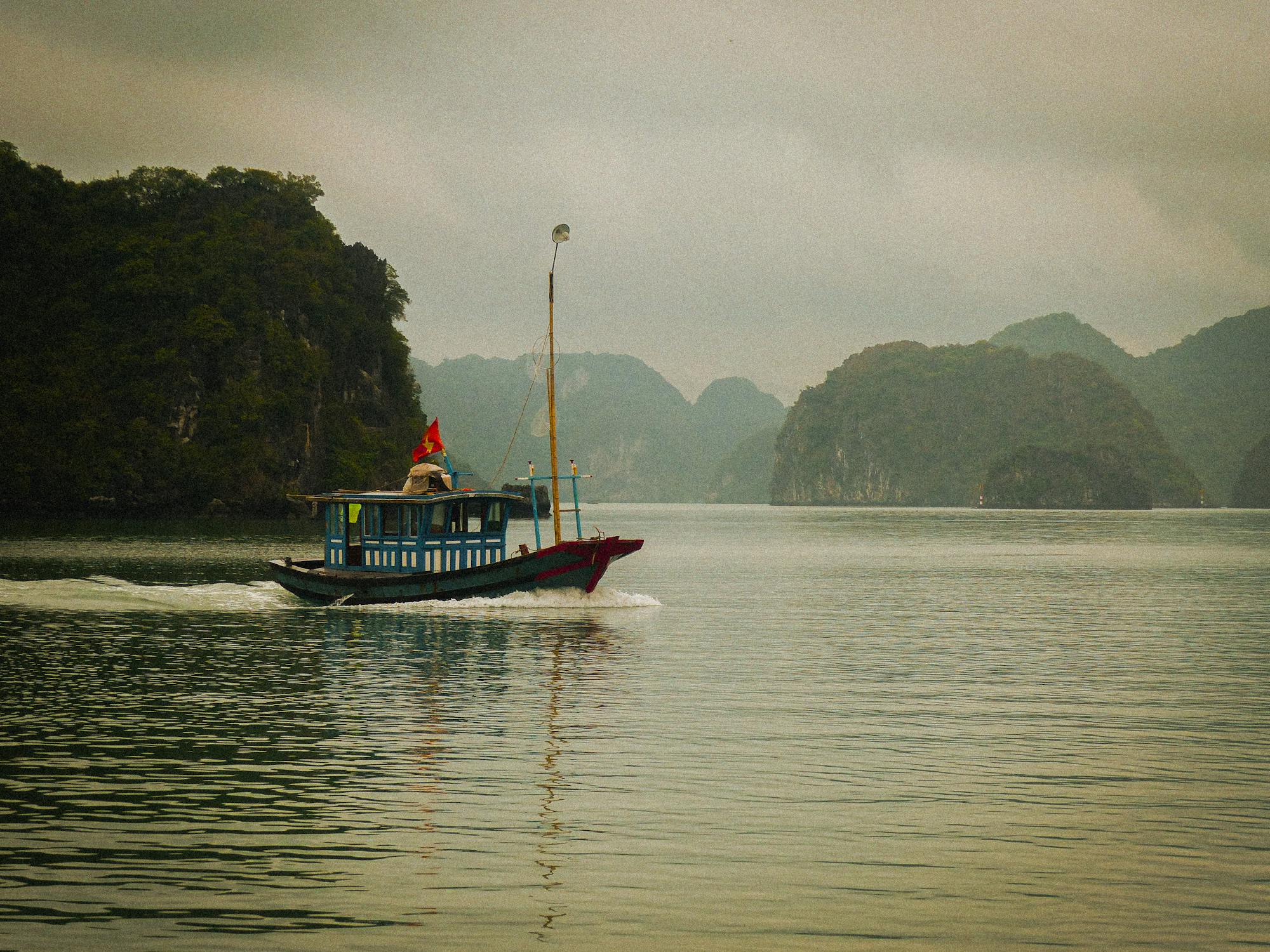Halong Bay, Vietnam: A Natural Wonder

Halong Bay, Vietnam, stands as one of the most stunning natural wonders of the world, captivating travelers with its emerald waters and towering limestone islands. Located in the Quang Ninh Province in northeastern Vietnam, this UNESCO World Heritage Site has become a must-visit destination for tourists seeking both adventure and tranquility. Its name, meaning "descending dragon," is steeped in local legend, adding a layer of mystique to its already enchanting landscape.
Halong Bay's geological significance is immense, with its unique karst formations resulting from millions of years of tectonic activity and erosion. The bay comprises nearly 2,000 islands and islets, each varying in size and shape, creating a mesmerizing seascape that has been the subject of countless photographs and travel stories. The area's biodiversity is also noteworthy, housing numerous ecosystems within its lush forests, caves, and marine environments.
Beyond its natural beauty, Halong Bay offers an array of activities for visitors. From exploring hidden caves and grottoes to kayaking through calm waters or simply lounging on pristine beaches, there's something for everyone. The bay's cultural heritage is equally rich, with floating fishing villages that offer a glimpse into the traditional way of life of the local communities. This combination of natural splendor and cultural depth makes Halong Bay a truly unforgettable destination.
The Geological Marvel of Halong Bay
Halong Bay's landscape is a testament to nature's artistry. Its karst topography was formed over 500 million years through complex geological processes. The islands are primarily made up of limestone, which has been sculpted into various shapes by the relentless forces of wind and water erosion. Some formations resemble animals or human figures, sparking local legends and myths.
Among the most famous formations is the "Fighting Cocks" Islet, which resembles two roosters facing off in battle. This iconic image has become a symbol of Halong Bay. Another notable feature is the Dau Go Cave, known for its impressive stalactites and stalagmites that create an otherworldly atmosphere inside.
The bay's underwater topography is equally fascinating. Divers can explore submerged caves and coral reefs teeming with marine life. The clear waters provide excellent visibility, making it a popular spot for snorkeling and diving enthusiasts.
Biodiversity and Ecosystems
Halong Bay's diverse ecosystems support a wide range of flora and fauna. Its terrestrial environments include dense forests that are home to various plant species, some of which are endemic to the region. The bay's waters are equally rich in biodiversity, hosting numerous fish species, crustaceans, and mollusks.
The Cat Ba Island archipelago within Halong Bay is particularly notable for its biodiversity. It houses the Cat Ba National Park, which protects rare species like the Cat Ba langur monkey. The park also offers hiking trails that lead to breathtaking viewpoints overlooking the bay.
Conservation efforts are crucial to preserving Halong Bay's natural heritage. Initiatives such as marine protected areas and sustainable tourism practices aim to minimize human impact on the environment while promoting ecological balance.
Cultural Heritage
Halong Bay's cultural heritage is as rich as its natural beauty. The bay has been inhabited for thousands of years by various communities who have adapted to its unique environment. Floating fishing villages like Cua Van offer insight into the traditional lifestyle of local fishermen who rely on the bay's resources for their livelihood.
Visitors can experience this way of life by taking boat tours that visit these villages. They can observe traditional fishing techniques, sample fresh seafood dishes, and even participate in daily activities such as net making or fish farming.
The bay also hosts numerous archaeological sites that shed light on its ancient history. Excavations have revealed artifacts dating back to prehistoric times when early human settlements thrived in this region.
Activities and Attractions
Halong Bay offers an array of activities for visitors seeking adventure or relaxation. One popular activity is exploring its many caves and grottoes. Sung Sot Cave (Surprise Cave) is one of the largest and most impressive caves in the bay with two main chambers filled with stunning rock formations.
Kayaking through Halong Bay's calm waters allows visitors to get up close to its limestone cliffs and hidden lagoons that are inaccessible by larger boats. Many tour operators offer guided kayaking tours that include stops at secluded beaches where visitors can swim or picnic.
Cruises are another popular way to experience Halong Bay's beauty from a different perspective. Overnight cruises offer comfortable accommodations aboard traditional wooden junks while providing opportunities for sightseeing during day excursions.
Practical Information
| Aspect | Details |
|---|---|
| Best Time to Visit | October to April (dry season) |
| Getting There | Nearest airport: Noi Bai International Airport (Hanoi) |
| Accommodation | Range from budget hostels to luxury resorts |
| Local Cuisine | Seafood dishes such as grilled squid and crab spring rolls |
| Currency | Vietnamese Dong (VND) |
Sustainable Tourism Practices
Sustainable tourism is essential for preserving Halong Bay's natural beauty while supporting local communities economically without causing harm to their environment or culture . Tourists should opt for eco-friendly tour operators committed environmental conservation efforts such waste management initiatives recycling programs etc . Choosing responsible travel options helps reduce negative impacts on fragile ecosystems ensures future generations enjoy same experiences we do today .